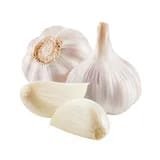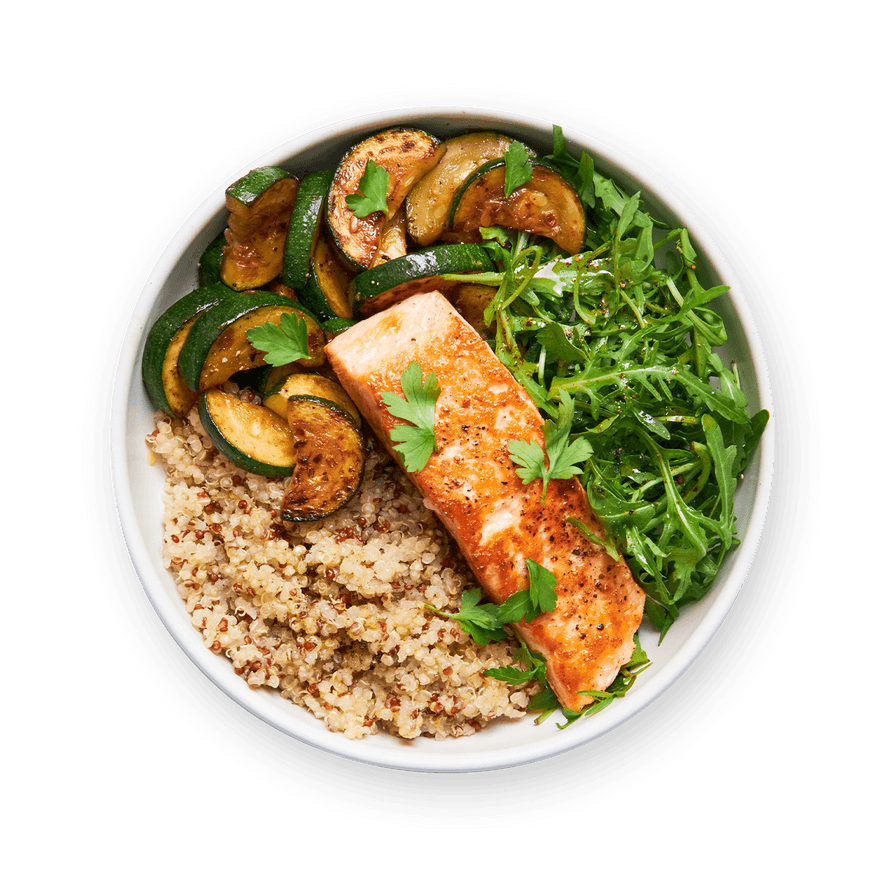Ingredients
Make sure you have...
Utensils
Pot (small), Frying pan, Stovetop
recipe

Step 1
Cook the quinoa according to package instructions.

Step 2
Wash & cut the zucchini into half-moon slices.


Step 3
Heat a drizzle of oil in a pan over medium heat. Add grated garlic, zucchini, salt & pepper. Sauté 4-5 min until the zucchini begins to brown around the edges.

Step 4
Pat the salmon dry with a paper towel & season with salt & pepper. Arrange the salmon skin side down in the pan. Sear for 6 min.
Step 5
Flip the salmon over and cook for 1 min on the other side. Remove from the heat.

Step 6
Serve salmon with a side of quinoa, zucchini & salad.

Step 7
Season with salt, pepper & add a drizzle of olive oil. Add a sprinkle of freshly chopped herbs if you have! (optional) Enjoy!
Personal notes
Add your own flavor!
Nutrition facts
Average estimated amount for one serving
| Energy | 549 cal. |
| Fat | 20 g |
| Carbohydrates | 49 g |
| Protein | 38 g |
| Fiber | 9 g |
Values are based on an average estimate for one serving. All nutrition information presented on Jow is intended for informational purposes only. If you have any concerns or questions about your health, please consult with a health-care professional.
On average, one serving of the recipe "Pan-seared Salmon, Quinoa & Zucchini" contains 549 Energy, 20 g of Fat, 49 g of Carbohydrates, 38 g of Protein, 9 g of Fiber.
Price per portion
| € | Nos recettes à -2 € par portion |
| €€ | Nos recettes entre 2 € et 4 € par portion |
| €€€ | Nos recettes à +4 € par portion |
Please note, the price above is dependent on your grocer and the available products in the grocery store you chose.
Scores


A Nutri-score
The Nutri-score is an indicator intended for understanding nutritional information. Recipes or products are classified from A to E according to their food composition to promote (fiber, proteins, fruits, vegetables, legumes, etc.) and foods to limit (energy, saturated fatty acids, sugars, salt, etc.).
A Green-score
The Green-score is an indicator representing the environmental impact of food products. The recipes or products are classified from A+ to F. It takes into account several factors on the pollution of air, water, oceans, soil, as well as the impacts on the biosphere. These impacts are studied throughout the product life cycle.
Retrieving reviews...



